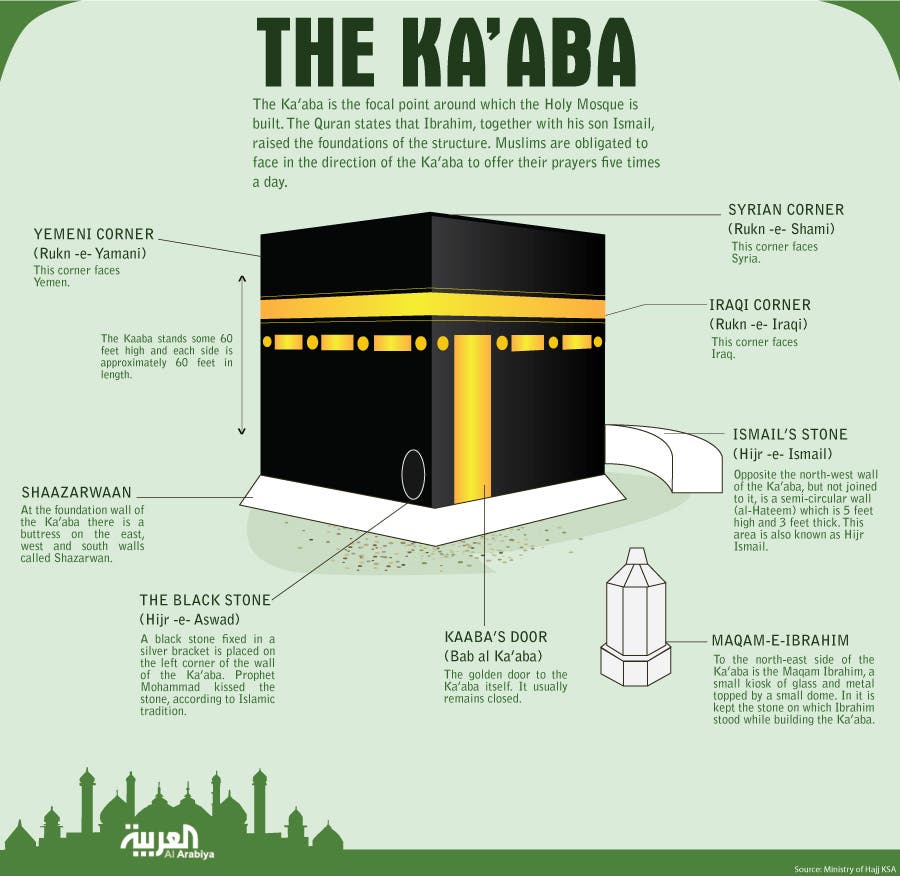1. Hajj Preparations
Hajj begins on the 8th day of Dhu al-Hijjah, when pilgrims make their intentions to undertake the pilgrimage by donning the Ihram garments.Assuming Ihram from Miqat – The intention to perform Hajj
Before pilgrims wish to enter the Al Masjid Al Haram (the sacred boundary of Mecca) and move across to perform Hajj, they should wear Ihram in order to make haram and traverse the five different areas of Miqats in the Haram boundary.
Below are the destination options and relevant Miqats for pilgrims travelling to Saudi Arabia to perform Hajj:
• Dhu’l Hulaifah (Abbyar Ali) is for pilgrims coming to Saudi Arabia from or through Madina first to perform Hajj al-Tamatt’u
• Al-Juhfah (near Rabigh) is for pilgrims coming from or through Syria, Morocco, or Egypt.
• Qarn-al manazil (As-Sail Al-Kabeer) is for pilgrims coming from or through Najd or Taif.
• Yalamlam (Sa’adiyah) is for pilgrims coming from or through India, Pakistan or Yemen.
• Dhat `Irq is for pilgrims coming from or through Iraq.
Before setting off from their place of stay and making their way to the sacred boundary of Mecca, pilgrims are bound to assume a state of Ihram, which is the combined sacred act of Niyyah and Talbiyah necessary to perform Hajj. Niyyah is the innate intention to perform an act of worship, while Talbiyah is a special prayer said in supplication to attain Ihram.
All pilgrims are required to stick to certain guidelines before entering into the Miqat.
To become a Muhrim (a pilgrim that has attained the state of Ihram), a pilgrim must prepare himself for Ihram by following the below steps as instructed by the Prophet (PBUH):
• Performing ablutions – cleansing the body to attain physical purity, which involves some rituals that are mandatory (Mushtahab) and others, are preferable for Ihram:
I. Ghusl (Mustahab)
II. Perfuming the head & beard. (Mustahab)
III. Clipping finger & toe nails (Preferred)
IV. Trimming moustache (Preferred)
V. Shaving off unwanted body hair (Preferred)
• Changing into the sacred attire of two-pieced white Ihram sheets (Izar and Rida) for men and ordinary Islamic clothes for women. Both, men and women, should wear the flip-flops or sandals that expose the middle bones of the midfoot.
• Performing the two Rakats of Salah al-Ihram while covering the head.
• Pronouncing the Niyyah as the Miqat approaches
• Reciting Talbiyah repeatedly while traversing the Miqat stations in the sacred boundary of the Grand Holy Mosque until the commencement of Tawaf before travelling to Mecca for the next step of Umrah.


















